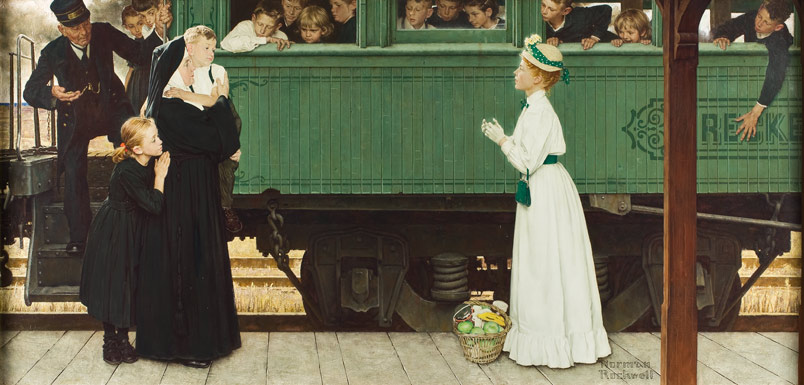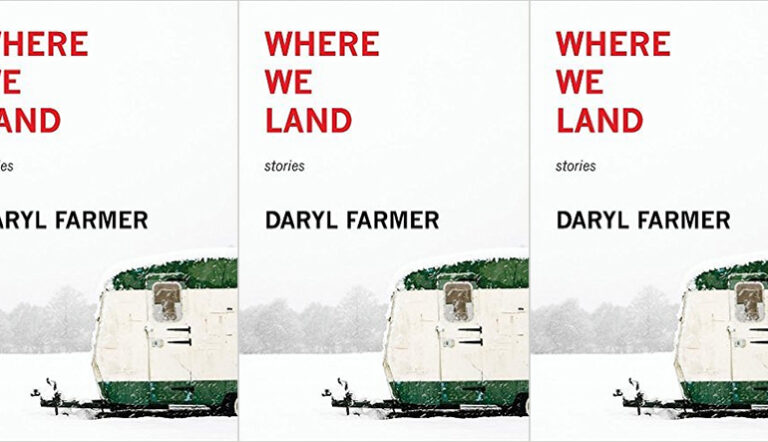Armchair Traveling through History: The Orphan Trains in Literature

Between 1854 and 1929, around 200,000 homeless, abandoned, and orphaned American children were sent by train, mostly from New York City, to new homes, mostly in the Midwestern U.S.
Later in the twentieth century and early in the twenty-first, in our contemporary versions of the Orphan Trains, planes from Vietnam and Korea brought escorted children to new families in the U.S and took new adoptive parents from the U.S. to Guatemala and Ethiopia and China to meet their new children. My own daughter came to me at ten months on a train from Yiwu City to Hangzhou in China’s Zhejiang Province.
So no wonder, when I read about the U.S.’s 75-year Orphan Train social experiment, it resonated so strongly with me. On a brief Thanksgiving trip to my native Kansas, I hoped to visit the National Orphan Train Museum and Research Center, dedicated to preserving stories and artifacts related to the movement, in Concordia. But an ice storm interfered with my plans, so I had to settle for some armchair traveling, reading the stories, both fictional and real, of orphan train riders.
At predetermined stops along the way in towns where advertisements had been posted, children were herded off of trains to line up while, one rider recalls in the book We Rode the Orphan Trains, “[Prospective parents] surrounded us, made us turn around, lift our skirts to see if our legs were straight, and open our mouths to show our teeth.” Some children were separated forever from biological siblings, landed in abusive situations, were treated as hired help, or weren’t fully accepted by their new families or communities.
But for the most part, orphan train riders were positive about their new lives in the Midwest, and, according to many sources, went on to live happy, productive lives.
Several novels feature orphan train riders, including Christina Baker Kline’s bestselling 2013 Orphan Train. A colleague and I chose Kline’s novel as a campus read in courses throughout the University of Pittsburgh at Bradford this fall, leading to discussions of history, sociology, literature, and identity. Local organization One Book Bradford also hopped onboard, promoting the book throughout the community and sponsoring events like a community theater performance of letters from orphan train riders and talks by representatives from local social service agencies.
Kline’s book alludes to other orphan literature such as Jane Eyre and Anne of Green Gables, highlighting both literary treatments of orphans and changes in social attitudes toward them. By writing about characters from two generations, Kline also contrasts the orphan trains with the current foster care system in the U.S.
A couple of students were cynical. They saw writing fiction about historical events as “exploiting” them for the sake of money. And while I wish that fiction was so valued by our culture that it was possible for novelists to write with the expectation of making money, in fact, I argued, dramatizing the stories of individuals is one way of keeping them alive. Such projects help us to discover and remember lesser-known parts of history along with more scholarly treatments such as Marilyn Irvin Holt’s 1994 Orphan Trains: Placing Out in America.
Before and during the Kansas ice storm, I read Eve Bunting’s 1996 picture book Train to Somewhere, Joan Lowery Nixon’s young adult Orphan Train Adventures series, the first of which was published in 1987, and Laura Moriarty’s 2012 adult historical novel The Chaperone. All fiction, these books turn dry historical facts into the compelling stories of individuals longing for belonging and acceptance, grappling with complex senses of loss, inferiority, abandonment, and gratitude, often living under veils of secrecy about their pasts.
Bunting’s heroine’s grief over the loss of her birth mother is poignantly portrayed while Nixon’s novels are reminiscent of Anne of Green Gables and anticipate Harry Potter as she filters each new series installment through the point of view of a different character. Eventually, the series tells the stories of all six of a group of siblings who are split up by their Orphan Train placements not long before the Civil War, and who encounter abolitionists and participate in the underground railroad. The oldest girl dresses as a boy, knowing that she’ll be more desirable and more likely to be placed with her baby brother; the oldest boy finds himself in a life-threatening rivalry with the son of the abusive family who takes him in.
Moriarty’s protagonist Cora’s efforts to confront her past as an orphan train rider is just one dimension of her complex transformation, set against a time of social upheaval and change, particularly when it comes to attitudes toward sexuality and women’s rights. In 1922, the former orphan train rider accompanies teenager Louise Brooks, who in real life became a well-known flapper and silent film star, from Wichita, Kansas to New York City for a summer studying with a legendary dance troupe.
Elizabeth Raum’s Orphan Trains: An Interactive History Adventure is a nonfiction book that uses a choose-your-own adventure format effectively; this format suggests the range of permutations of fate, reminding young readers that no historical event was a singular experience, and that generalizations are inadequate for capturing human experience.
Ultimately, Andrea Warren concludes in We Rode the Orphan Trains, the stories of orphan train riders show us the grief and challenges faced by orphaned and homeless children—but also that the idea of “family” can transcend biology. “While reminding us of the sensitivity and vulnerability of children,” Warren writes, “they also remind us of their resilience.”

